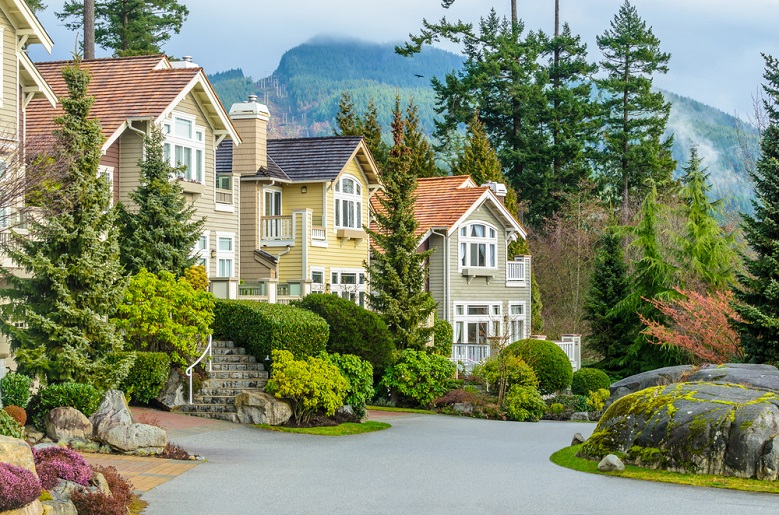
Real estate investors calculate an investment’s potential cash flow by comparing the financing and maintenance costs with current market rental rates. If the rental income more than pays for the mortgage, taxes and associated costs, the property is up for further consideration. But regardless of the initial calculations, buying in the wrong neighborhood can erode the property’s value and lower rents.
Whether you’re buying an investment property for the rental income and long term-appreciation or looking for a house you can flip for a quick profit, you need to invest in a neighborhood that will support the home’s value and continue to appeal to buyers and renters. You might be able to find one of those diamond-in-the-rough gems, but if the rest of the surrounding neighborhood is also in that category, your investment may not turn out as you hope.
Buyers and renters alike usually have a good idea where they want to live. Perhaps they’re drawn by good schools or proximity to employment. Whatever the draw, the neighborhood can be as important as the property itself. As a real estate investor, you should have the very same mindset. So how do you properly evaluate a neighborhood? Here are five factors you should consider.
1. Research historical values.
You or your real estate agent can research the area to find out how the homes in a neighborhood have fared over the years. Go back 15 or even 20 years and see if there is a history of a gradual increase in home values. In certain areas, you can discount the “blip” in values that occurred in the mid-2000s, when both homeownership and real estate values hit record levels, but you can research public records that show what homes have sold for in the area over time. You want a neighborhood that has a pattern of gradual price appreciation, not one that has experienced multiple spikes and corrections.
2. Check out the quality of the schools.
The quality of the public school system is a big draw for families. Established neighborhoods located within a noted public school system will command higher rents than similar properties in an area of average or poor public schools. If the school system is exceptionally strong, people will move there simply for the schools. Individual states vary in whether they rate public schools with stars, categories or even an “A-through-F” grading system. Use popular sites like GreatSchools or SchoolDigger.
3. Look for employment opportunities.
Are there jobs nearby? Are there major employers that attract high-paying jobs in the area? There will always be a demand for housing in a neighborhood with consistent employment opportunities. And that doesn’t always mean that there has to be a major manufacturer in town. Colleges and universities are big employers, as are state capitals or county seats.
In addition to identifying a cadre of established employers, look at the commutes. Relatively speaking, is the commute manageable or do most residents have to drive a considerable distance before arriving at their jobs every day?
The availability of employment will also be reflected in the demographics for a given zip code or codes. Look for household income higher than the local median. You don’t need to look for the priciest real estate in town, but you can identify neighborhoods where the aggregate household income is greater than in adjacent areas.
4. Do a rough count of the number of nearby listings.
Are there several “For Sale” signs in the neighborhood? More homes for sale can indicate that you may get a better deal, but for the long haul, it can also be a sign of trouble. Why are so many properties listed? And for those that have sold, how long did it take to sell them? Professional real estate agents pay attention to the “Days on Market” number, as it’s a good indication of whether it’s a buyer’s or a seller’s market. If it’s taking more than six months to sell a home, you may want to reconsider the investment, unless you can document a long-term history of appreciation or identify why so many homes are on sale.
Ideally, you want an established neighborhood with less turnover. If possible, you want to be one of the few rentals in the entire neighborhood. Too many rentals in the area mean you’ll be competing for the same tenants, suppressing your rent.
5. Drive it home.
To get a first-hand experience of the neighborhood, hop in your car and take a drive. Make a physical inspection of the area with your own eyes. Get a feel for commute times by driving to the neighborhood in rush hour to check out the traffic. Visit the neighborhood on different days and on the weekends to soak in its personality.
How are the homes kept? Are the lawns mowed and do the houses have a fresh coat of paint? Are the streets clear of debris? Can you see an overall pride of ownership? Real estate investors look for homes that need some work but are located in an ideal neighborhood. There might be one or two owners who don’t take care of their properties, but you can get a clear picture of a neighborhood’s overall identity with a personal visit.
Being the Expert
Once you’ve bought your first real estate investment, you may soon find that you’re scoping out the neighborhood on a regular basis. When you’ve found the ideal area, make sure the residents know you’re an active real estate investor. Ask them to call you first if they decide to sell for whatever reason. Once you’re an expert, you’ll almost immediately know if a new listing is worth your attention.

